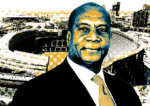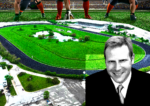Chicago Bears fans have more to look forward to than the presumed selection of star quarterback Caleb Williams with the No. 1 pick in next month’s NFL draft.
The team continues to sculpt its vision for a domed stadium near its longtime home Soldier Field, anchoring a surrounding mixed-use development that calls for at least $1 billion in public subsidies, Crain’s reported.
The envisioned stadium, for which the Bears have pledged to invest $2 billion, aims to transform the city’s lakefront, promising year-round programming and economic opportunities. However, realizing this vision entails extensive public infrastructure upgrades, such as revamping the Museum Campus and enhancing accessibility from DuSable Lake Shore Drive and surrounding streets.
While the Bears have committed substantial private funds, discussions suggest that the infrastructure expenses are expected to be publicly subsidized.
Plans also include the potential construction of a lakefront hotel, adding another layer of complexity to the project and possibly fueling opposition from parks advocacy groups concerned about the impact on public spaces.
The precise financial framework for covering infrastructure costs remains nebulous, with attention focused on finalizing the stadium’s funding plan. Support from the state will be crucial, as the team pursues bonds issued by the Illinois Sports Facilities Authority.
Last year, the Bears appeared locked in to building a $5 billion stadium in the northwest suburb of Arlington Heights, but an ongoing tax dispute mucked up that plan, although it hasn’t been ruled out completely.
Mayor Brandon Johnson has determined to keep the team in the city limits.
“The future stadium of the Chicago Bears will bring a transformative opportunity to our region — boosting the economy, creating jobs, facilitating mega-events and generating millions in tax revenue,” Johnson told the outlet.
The proposed stadium, located south of Soldier Field, would repurpose existing infrastructure while introducing amenities such as public restrooms and a restaurant accessible to visitors of the Museum Campus. The development could also involve significant alterations to Lake Shore Drive’s traffic flow and the construction of a pedestrian bridge spanning Burnham Harbor.
Challenges loom on the legal and financial fronts, though. Friends of the Parks, a prominent advocacy group, poses a potential legal hurdle reminiscent of past disputes over lakefront development projects. In addition, coordinating with the Chicago White Sox, which is also plotting a new stadium, may offer solutions as far as obtaining funds from the state.
As discussions unfold, the Bears are collaborating with financial and legal experts to navigate the intricate landscape of stadium financing and regulatory approvals.
—Quinn Donoghue
Read more



